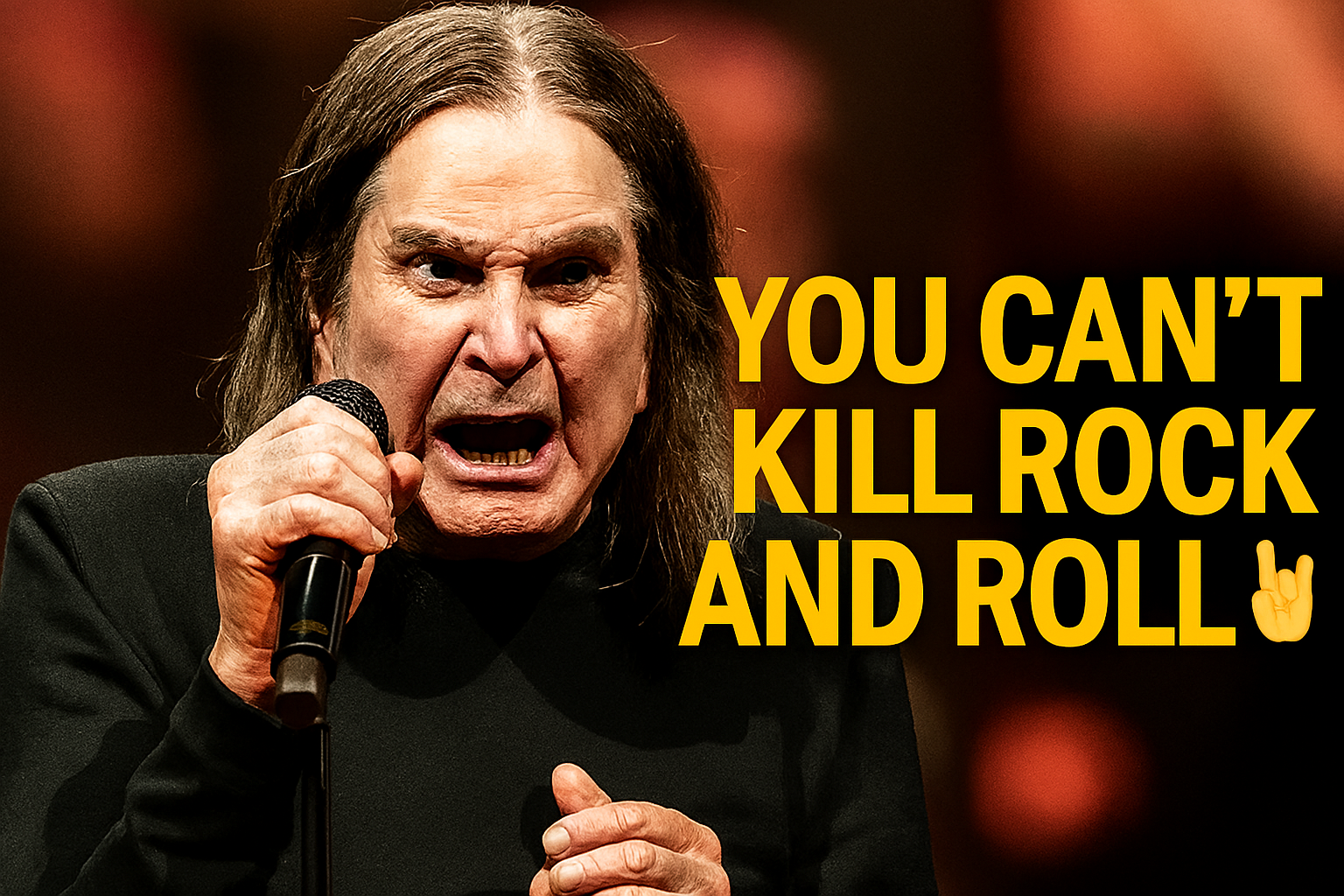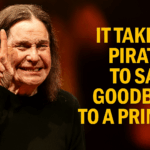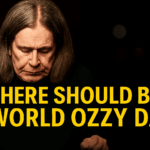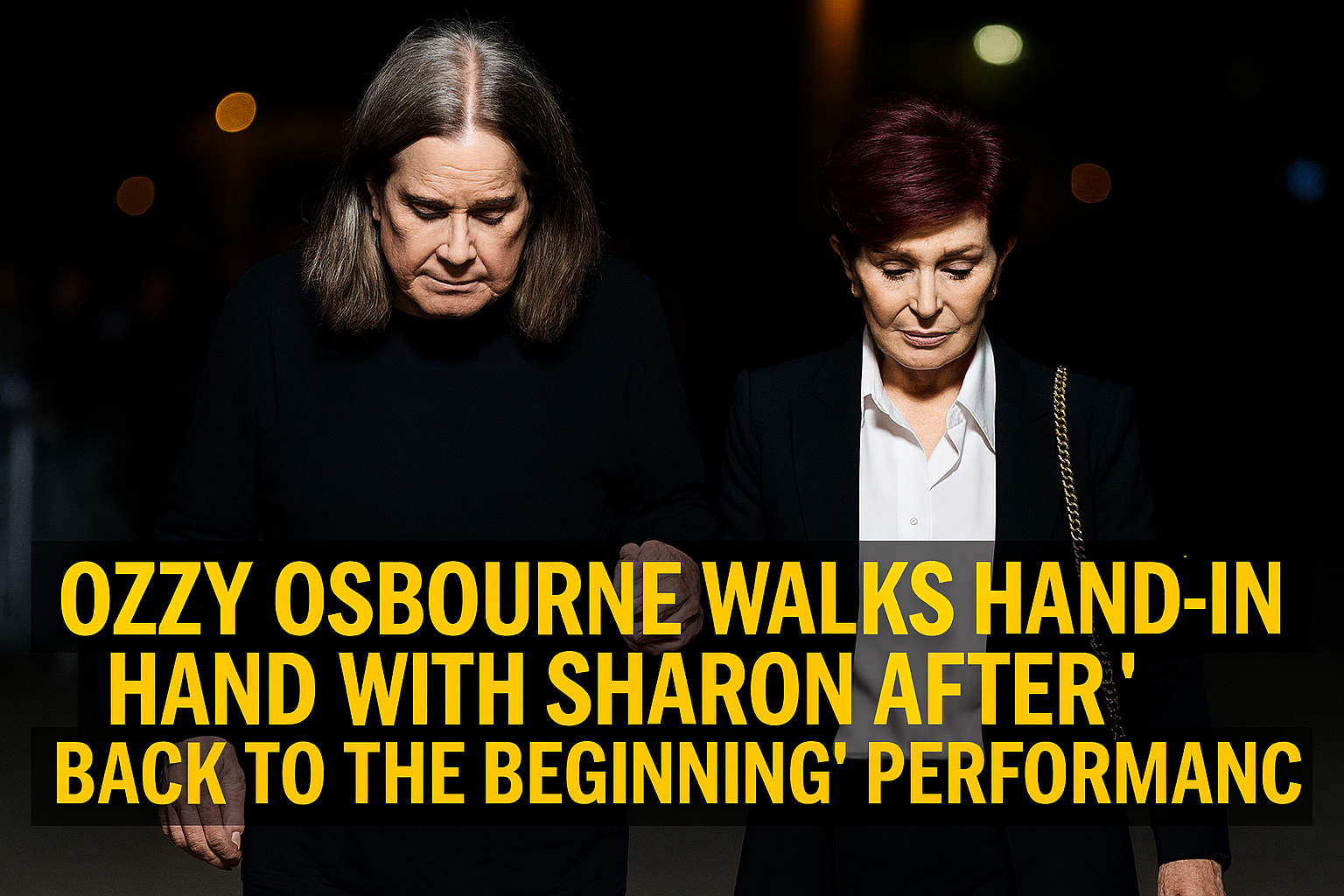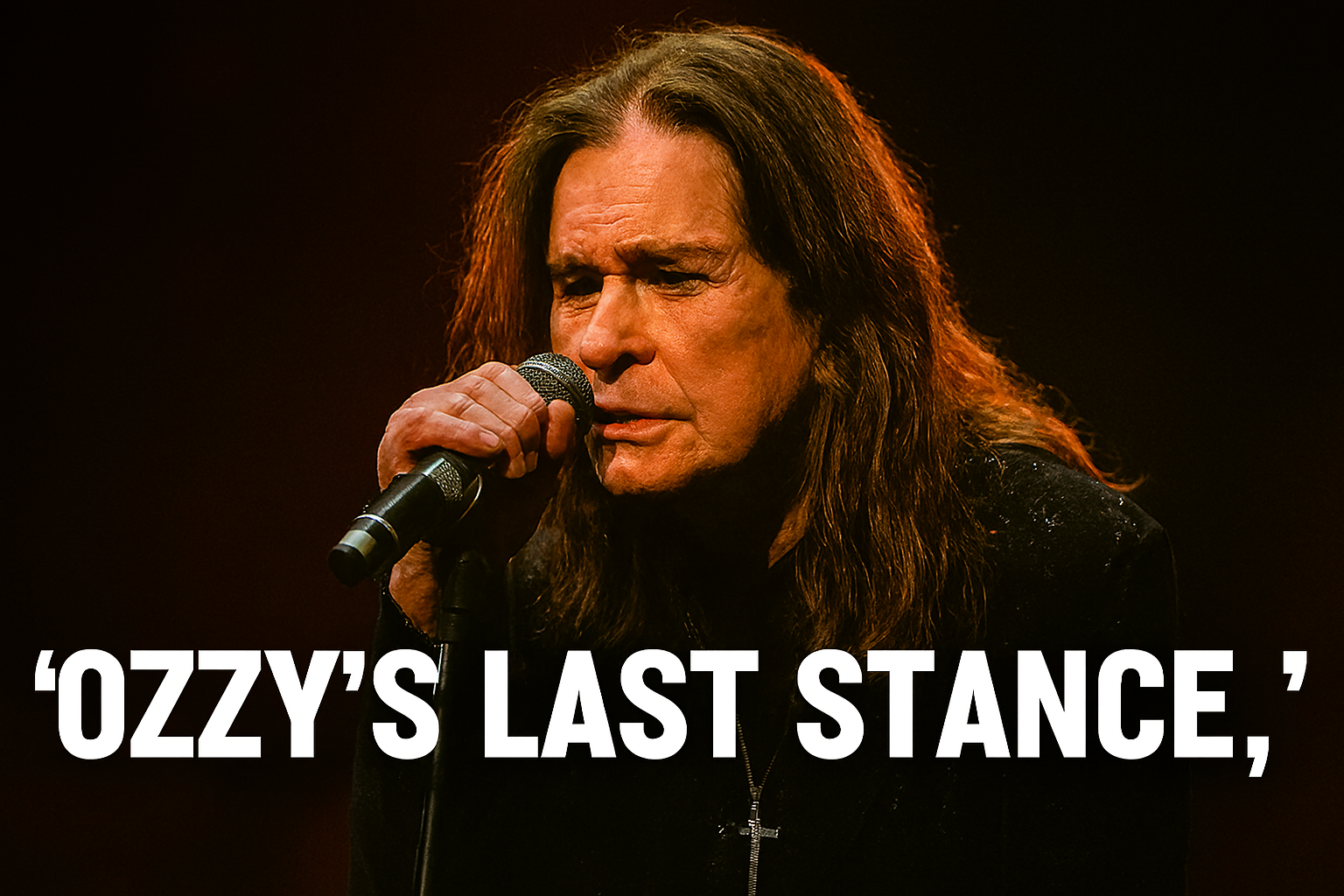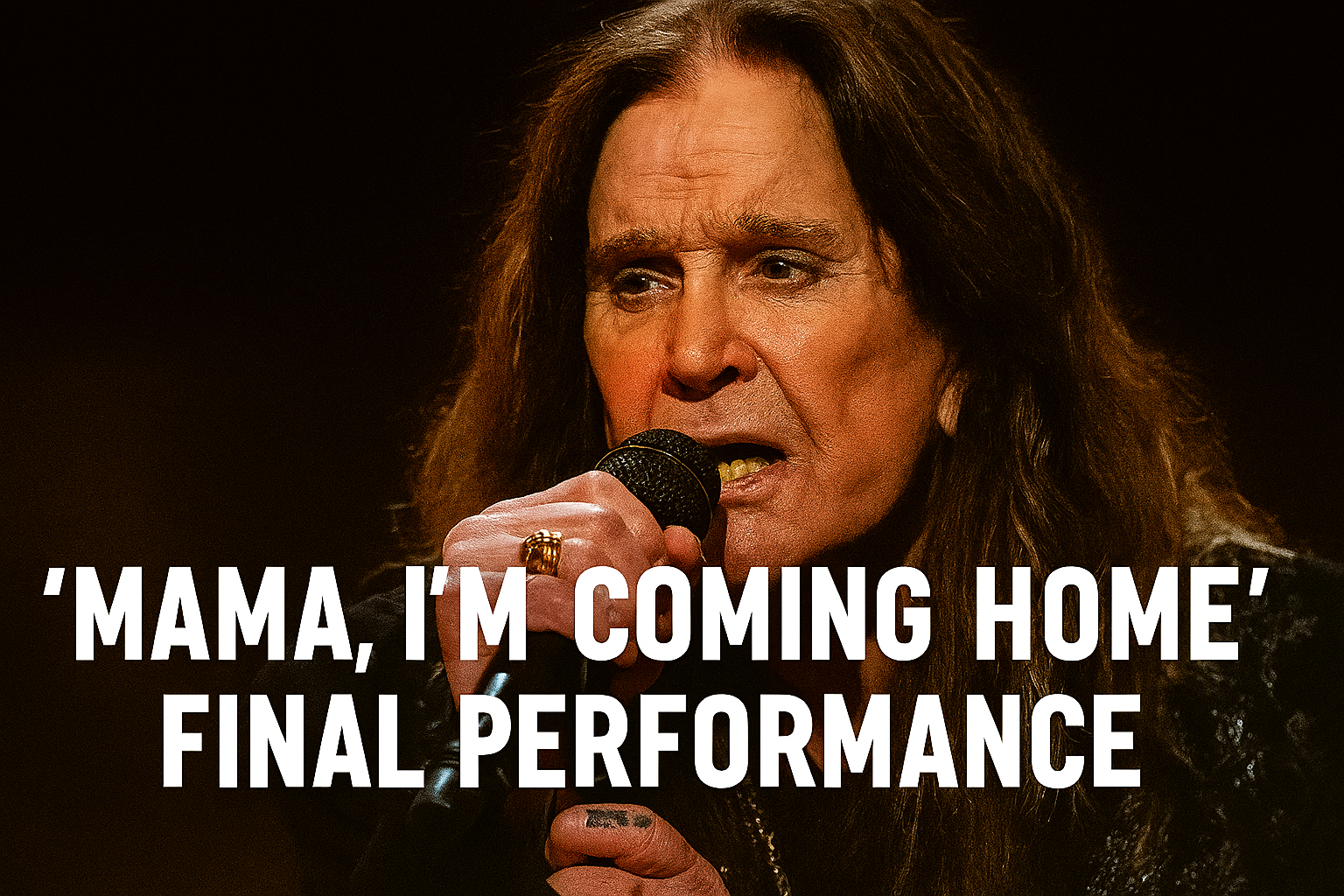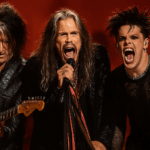Ozzy Osbourne, 76, battling Parkinson’s and heart disease, didn’t walk onto the stage with swagger. He was helped, seated in a gothic black throne adorned with skulls and bat motifs. But the moment he gripped the mic, the crowd of 40,000 knew: the legend hadn’t left the building. He was right there, roaring through the pain, proving that the soul of rock is eternal.
A Voice That Refused to Fade
Ozzy’s voice—gravelly, haunting, and defiant—still carried the weight of decades. From “Crazy Train” to “Paranoid,” each lyric felt like a final embrace. The cracks in his delivery didn’t weaken the performance; they made it more powerful. It was raw, vulnerable, and real. Fans weren’t just hearing music—they were witnessing a man pour out the last drops of his spirit.
Zakk Wylde, Ozzy’s longtime guitarist, summed it up best: “Just the fact that he willed himself to do that thing… it’s always just a speed bump and we’ll get through it”. That night, Ozzy didn’t just sing—he endured. And in doing so, he reminded us that rock isn’t about perfection. It’s about passion.
The Throne That Held a Legend
The chair Ozzy performed in has already become iconic. Black leather, skulls perched on the armrests, a bat emblem crowning the back—it was more than a seat. It was a symbol. A throne for a king who refused to abdicate. Fans are now calling for it to be preserved in a museum, immortalized as the final resting place of a legacy that shaped generations.
Ozzy didn’t stand. He didn’t need to. That chair held him like a monument, and every note he sang from it echoed through the stadium like a battle cry.
Sharon by His Side
As Ozzy walked toward the stage, he held Sharon Osbourne’s hand. The image of the two—Ozzy frail, Sharon steady—was a gut punch. It reminded fans that behind the chaos and controversy was a love story. Sharon had been there through it all: the rise, the fall, the redemption. And now, she was there for the final bow.
Her presence added emotional gravity to the night. It wasn’t just Ozzy saying goodbye—it was the Osbournes, together, closing a chapter that had defined rock history.
A Full-Circle Moment
The concert’s title, Back to the Beginning, wasn’t just poetic—it was literal. Ozzy returned to Birmingham, the city where Black Sabbath was born. Joined by original bandmates Tony Iommi, Geezer Butler, and Bill Ward, the reunion was electric. It marked the first time the full lineup had played together in 20 years.
The setlist was a journey through time. “Iron Man,” “War Pigs,” “Mama, I’m Coming Home”—each song a memory, each riff a heartbeat. Fans sang along, cried, and cheered. It wasn’t just nostalgia—it was communion.
The Echoes That Never Fade
Ozzy’s final performance wasn’t just a concert. It was a reckoning. A moment where fans confronted the passage of time, the fragility of life, and the power of music to transcend both. When Ozzy looked out and said, “I love you,” it wasn’t just a farewell—it was a benediction.
And that’s why fans are calling for July 22 to be declared World Ozzy Day. Not just to honor a man, but to celebrate a movement. Ozzy Osbourne didn’t just shape metal—he shaped identity. He gave voice to the misfits, the rebels, the dreamers. And even in his final hour, he showed us that rock and roll isn’t just alive—it’s immortal.
Final Reflection
Ozzy Osbourne’s body may be failing, but his spirit is untouchable. His eyes still blaze. His voice still roars. And his legacy? It’s carved into the soul of every fan who ever screamed his name.
You can’t kill rock and roll. Not while Ozzy’s echoes still shake the earth.
